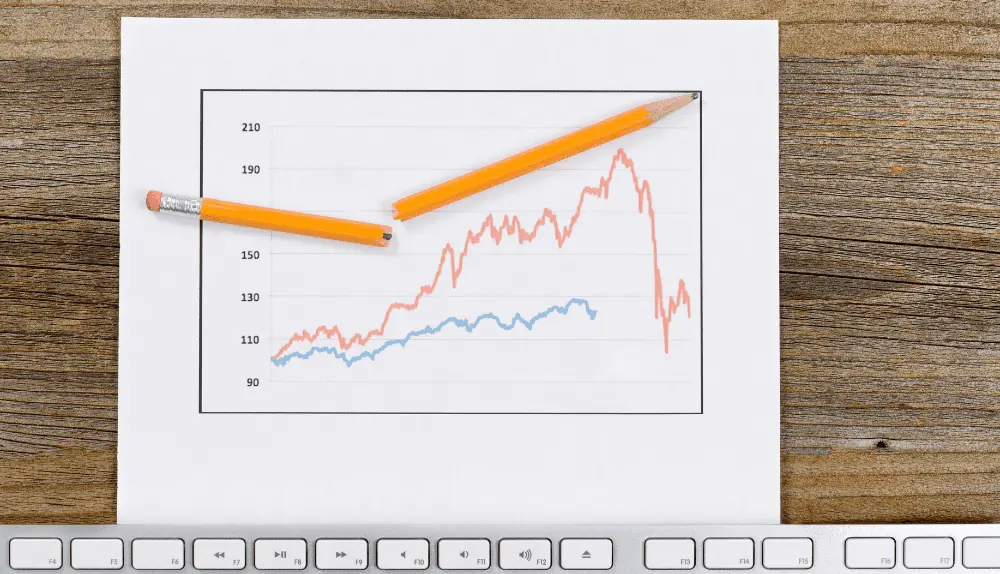When businesses seek financing for operating expenses, expansion, equipment, or other legitimate business needs, lenders evaluate certain criteria to determine if a loan will be approved and on what terms. Understanding the key factors lenders consider can help companies present themselves as strong candidates and get the funding they require to support business growth and success. In this article, we will talk about the criteria business lenders look for and tips for businesses.
Business lenders will assess the creditworthiness of a business based on metrics such as credit scores, loan-to-value ratios, and interest coverage ratios as well as the overall financial health and cash flow of the business. What kind of credit do the business and personal guarantors already have established? Can the business generate enough profit and cash flow to cover loan payments comfortably? Does the business own enough collateral to secure the loan amount needed? Answers to these types of questions determine creditworthiness and approval odds.
Lenders also evaluate the business’s financial statements, including balance sheets, income statements, cash flow statements, tax returns, bank statements, and business plans. Historical financial performance, growth trends, profit margins, and other key metrics provide insight into the financial strength and stability of the business. Is revenue increasing over time? Are expenses well-managed and growing at a slower pace? Does the business have a solid cash reserve and the ability to weather economic downturns? The financials paint an important picture.
Criteria Business Lenders Look For
Character: Your Credit History & Background
For businesses seeking financing, the credit history and creditworthiness of owners and guarantors are important factors lenders will consider in determining approval and loan terms through well-written paragraphs rather than formatted bullet points. Strong, established credit demonstrates a responsible payment history and financial discipline, increasing the chances of qualifying for a business loan.
Lenders evaluate not just the credit scores of owners, managers, and guarantors but also metrics such as loan-to-value ratios, credit history length, negative credit markings, and new credit applications which determine risk. The higher the credit scores and the lower these ratios and risky indicators, the lower the perceived risk of default. Scores over 700, loan-to-value ratios below 80%, longer credit history with a mix of account types, few or no negatives on reports/scores, and cautious new credit use lead to better odds of approval and favorable terms.
Requirements for personal guarantees from owners introduce risk as lenders consider the creditworthiness of all guarantors. Non-recourse loans minimize this risk. To ensure strong funding chances and beneficial terms, review your credit reports, scores, and history regularly. Look for and resolve any errors or signs of risk like rapidly increasing balances. Take steps to improve credit over time through responsible use such as paying bills on time, keeping low credit card balances, limiting new applications, and handling past issues judiciously.
Capacity: Your Ability to Repay Debt
Beyond creditworthiness, the capacity of a business to generate enough revenue and profits to repay debt obligations is critical to lender decisions through well-written paragraphs rather than formatted bullet points. Lenders evaluate several metrics related to the ability to pay including historical financial performance, projections, cash reserves, interest coverage ratios, debt-to-income ratios, and loan purpose.

Steady growth in sales and profits over time as well as a strong and solvent balance sheet fuel higher approval odds. Forecasts showing how the business will realistically repay the loan amount, interest, and any other debts for years with reasonable assumptions regarding growth potential provide deeper confidence. Adequate cash reserves ensure the ability to weather unforeseen issues that could impact cash flow and the ability to service payments without disruption.
Ratios demonstrating at least 2-3 times more in yearly profits than interest costs indicate a comfortable margin to cover loan payments, while lower debt-to-income ratios under 35% of income represent less risk. The purpose of funds also impacts views on the ability to repay. Loans funding reasonable, essential business expenses necessary for operations possess more capacity to generate repayment than unclear or questionable purposes.
Capital: What You Owe vs What You Own
In evaluating a business’s ability to take on additional debt, lenders analyze not just income and cash flow capacity but also the ratio of assets to liabilities through well-written paragraphs rather than formatted bullet points. Key metrics regarding capital include loan-to-value ratios, debt-to-asset ratios, equity ratios, collateral coverage, and financial leverage.

Loan-to-value ratios below 80% signal more equity and less risk as lenders recover less of the loan amount from selling the collateral. Lower debt-to-asset ratios like 50% or under indicate more unencumbered assets to tap into repaying loans if needed without more debt than value. Higher equity ratios, especially over 30%, demonstrate strength through less debt reliance and lower default probability. More and higher-value collateral than amounts owed provides over-collateralization for minimal lender risk while less coverage increases risk.
Greater financial leverage means more debt funding assets rather than equity, increasing risk. Relatively lower leverage shows safer financing and lower default likelihood if cash flow weakens. To make a compelling case for approval and terms, develop sustainable growth in equity and assets through responsible financial management over time.
Conditions: Market, Economic, Industry & Other Factors
Beyond the creditworthiness, capacity, and capitalization of individual businesses, lenders also evaluate broader economic and industry conditions that could impact the ability to repay loans through well-written paragraphs rather than formatted bullet points.

Overall economic health and growth fuel more lending as vital, expanding economies with job growth, consumer spending, business investment, and GDP growth reduces risk while slower times with recession potential increase default risk. Industry trends and outlook determine if a business’s industry is currently growing or may decline to impact demand, sales, profits, and ability to repay debt. Stable, long-term growth prospects appeal more to lenders.
Regional or local conditions like natural disasters, major employer loss, demographic shifts, economic diversification challenges, or risk factors increasing uncertainty and peril also make lenders more cautious. Issues pressuring sales, profits, or margins such as excessive competition or policy/trade changes lead to higher perceived risk. Niche markets with less competition tend to attract more lending interest.
Regulation changes raising costs significantly impact risk appetites. Industries/businesses with more regulation and compliance costs are usually viewed as higher risk. To build a strong case favorable conditions aid your ability to repay, discuss how stable expansion and economic/income growth benefit you while preparing strategically for potential downturns. Detail how driving sales/profits despite industry/economic headwinds when conditions worsen through plausible strategies.
Collateral: Available Assets for the Lender
The collateral provided for a loan, or available assets that can be repossessed and sold by the lender if the business is unable to repay, significantly influence approval decisions and loan terms through well-written paragraphs rather than formatted bullet points. Stronger, more valuable collateral means less risk for lenders.
Loan-to-value ratios, the loan amount compared to collateral value, provide an equity cushion and security. Lower ratios, 70% or less, mean more value is recovered by selling the collateral. Higher ratios leave less value, raising default risk. The collateral type also impacts security and approval odds. Favored types include inventory, accounts receivable, equipment, commercial real estate, personal guarantees, and cash reserves. Liquid assets like cash and inventory sell more easily with less depreciation impact.
Collateral value and liquidity determine how much can be recovered from selling assets. More valuable, liquid collateral holds/increases value, supporting riskier/costlier loans. Collateral losing value quickly or being difficult to sell increases risk. Additional collateral beyond loan requirements provides more buffer/flexibility but also more that can be repossessed if necessary.
How To Improve Each C
Here are some tips for improving your creditworthiness, capacity, capitalization, and collateral when seeking business financing:
Creditworthiness:
Review credit reports regularly for errors and signs of fraud or risk. Work to improve scores over time through responsible use of credit. Pay bills on time, keep low balances on credit cards, and limit new applications. If needed, you can take steps to resolve past issues or disputes to build a longer, stronger credit history.
Capacity:
Grow revenue and profits steadily over multiple years through new customer acquisition, sales, marketing, or operational efficiency efforts. The strong financial performance demonstrates the ability to repay loans through cash flow and profits. Build cash reserves that can support payments if economic issues arise temporarily impacting cash flow. Develop projections showing how businesses will realistically repay loans, interest, and other debts.
Capitalization:
Focus on balance sheet strength through increased equity and lower debt levels relative to assets and income over the long run. Retain more profits each year rather than distributing all to owners. Pay down existing business debts more aggressively according to ability. When securing new funding, explore options allowing longer grace periods before repayments start to minimize monthly payments, interest charges, and financial constraints, especially early on.
Collateral:
Provide extra collateral coverage beyond the minimum required for any new loans. Review collateral values regularly and take steps to optimize as needed through additional assets, improved condition/quality, or greater market value. Consider non-traditional types of collateral like inventory, accounts receivable, or equipment that provides security while still allowing working capital flexibility. Ensure any pledged assets meet criteria of higher value, liquidity, quality, and durability as well as lower loan-to-value ratios for the most compelling case.
Bottomline
With discipline and prudent management over time, you can strengthen each of the credentials evaluated for business financing approval and beneficial terms. The better your creditworthiness, the stronger your capacity and capitalization, and the more compelling your collateral—the more possibilities open up through access to affordable resources. Build your case systematically, and watch more opportunities become achievable as obstacles fade and progress becomes the new standard. By developing the means for success, inspiration translates seamlessly into impact.

